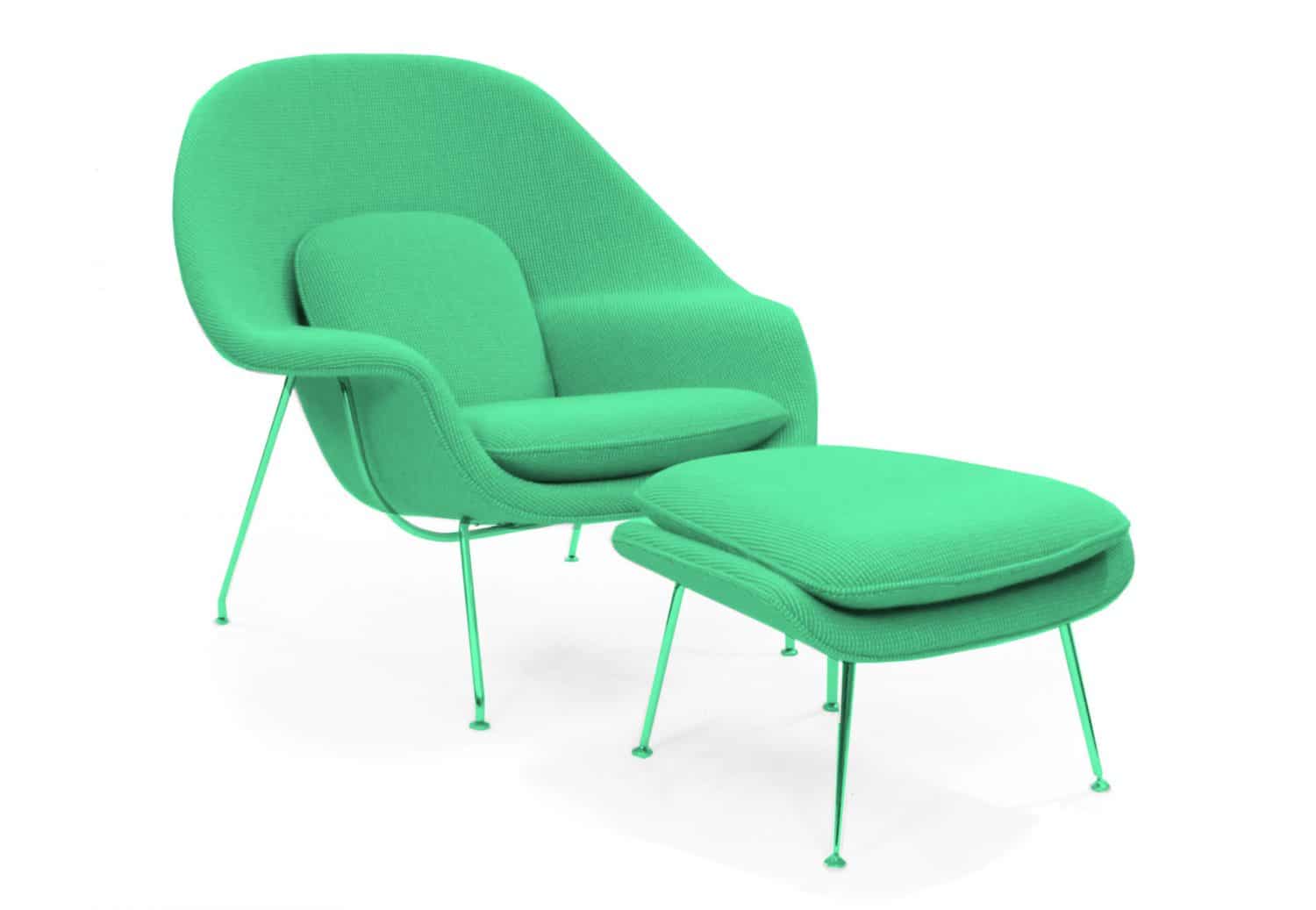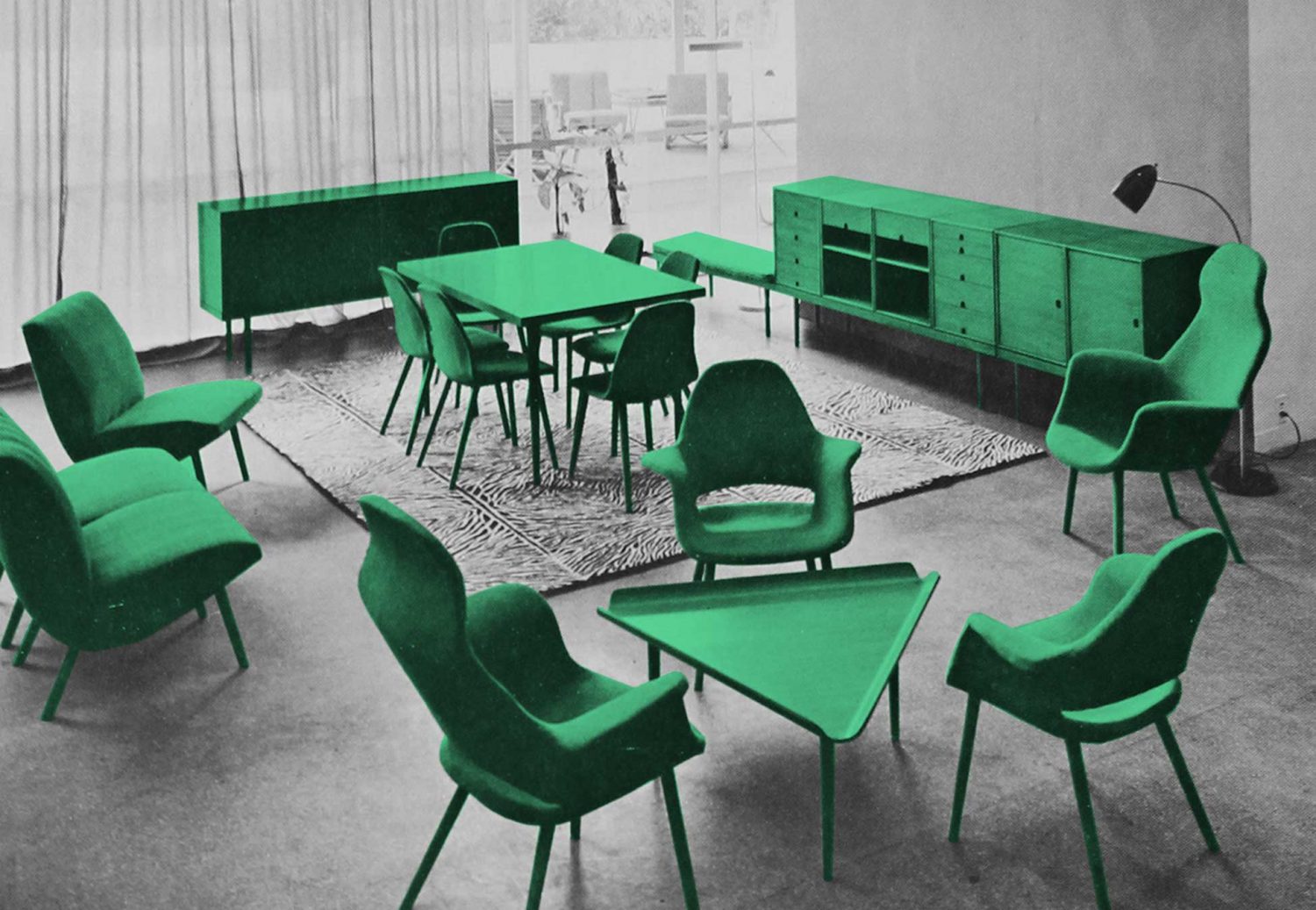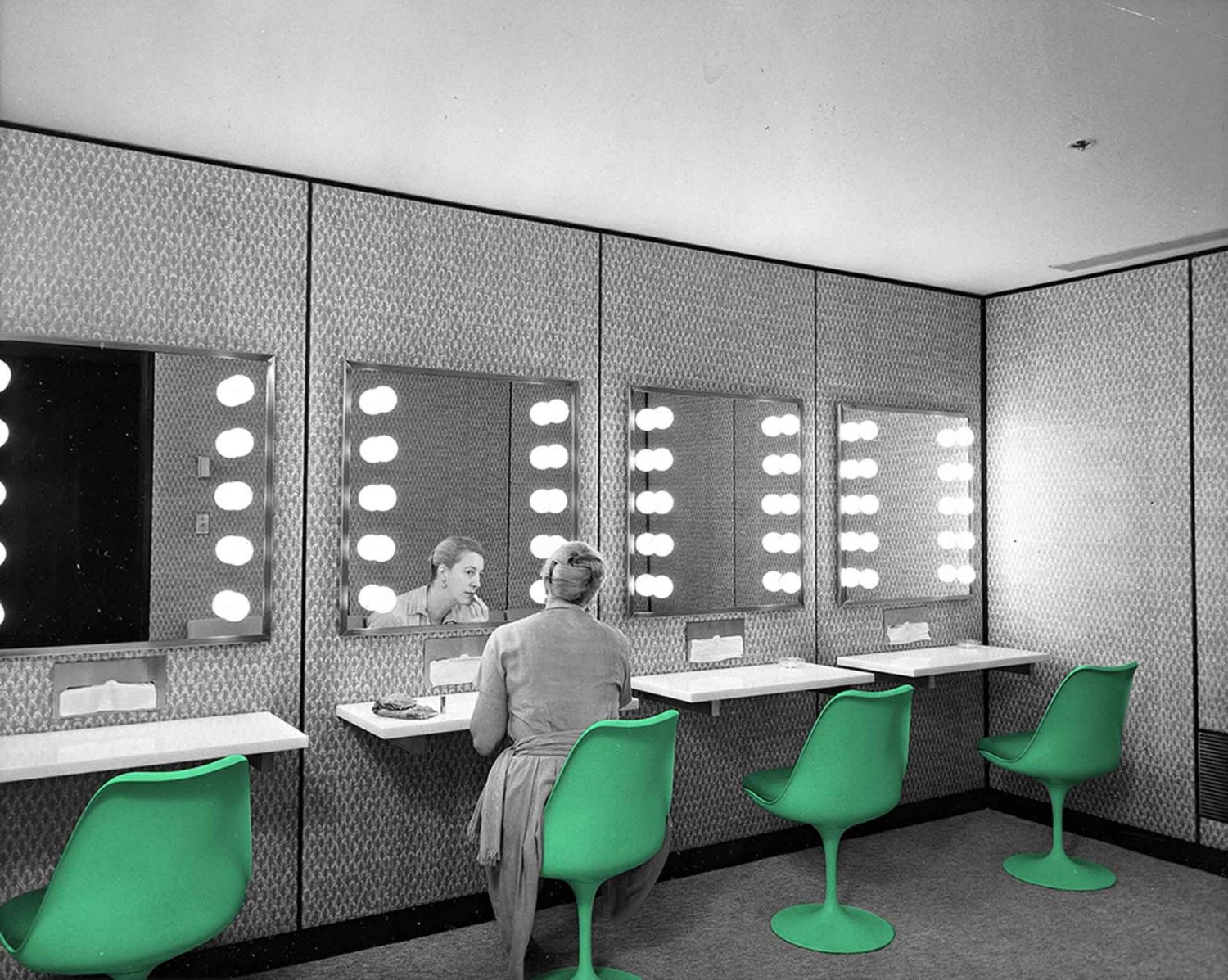INTERIOR
An American Classic #Eero Saarinen

The American architect and designer Eero Saarinen studied in the prestigious Cranbook Academy of Art, directed by his father the Finish architect Eliel Saarinen and also attended by other renowned designers such as Florence Knoll, Harry Bertoia or Charles Eames. Together with Charles Eames, he took part in the Organic Design in Home Furnishing Competition organised by the MoMA in 1940. Among the pieces for a living room that they submitted to the competition, it stands out an armchair made of a single wrapping element that includes seat, back and armrests. The plywood sheet is first moulded and then padded and upholstered. These chairs conformed to the user’s body as an extension of his clothes rather than as architecture.
Saarinen emphasised plasticity, continuity and homogeneity in the furniture that he designed afterwards, as well as in the public part of his architecture. An example for this is the Womb Chair, where plywood is replaced by fibreglass-reinforced polyester resin. Some of his best known buildings, such as the terminal of the John F. Kennedy International Airport or the David S. Ingalls Rink, are also characterised by the use of fluid, organic shapes.
Perhaps the most important thing I learned from my father was that in any design problem one should seek the solution in terms of the next greater thing. (…) If the problem is a chair, then its solution must be found in the way it relates to the room.Eero Saarinen
Saarinen did not achieve his objective of a homogeneous piece of furniture, made of a single piece of material. His closest attempt, the Tulip Chair, was made of a plastic shell and an aluminium pedestal, both in white to simulate the same material. Saarinen developed this range of furniture on single pedestals in order to prevent the chaotic image generated by the accumulation of legs from the traditional chairs and tables.


